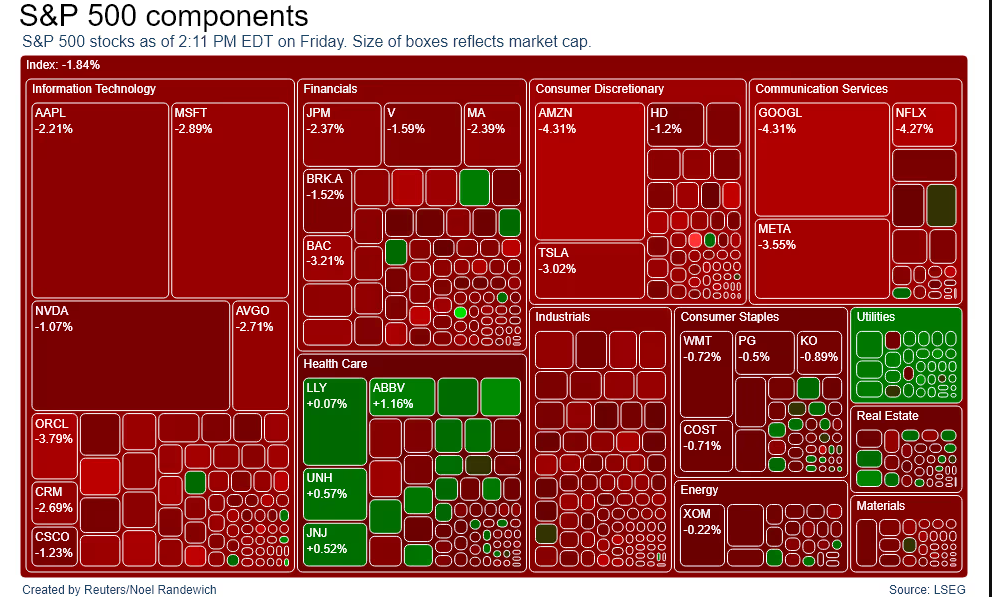As the Trump administration sounded the clarion call ahead of Wednesday’s “liberation day” tariff assault on key US trading partners, the White House may have been a bit miffed to see the Wall Street legions in a rather chaotic retreat on Friday.
Trading screens were awash with red, the S&P 500 dropped 2%, the Dow down 1.7% and the tech-centric Nasdaq haemorrhaged 2.7%.

Europe, which is very much in the US tariff cross hairs, was relatively less wounded — but still down a painful 1%, while the UK’s FTSE was barely scratched shedding just 0.1%.
Futures trading points to the ASX 200 dropping more than 1% this morning.
Wall Street’s rout was prompted by the twin fears of rising inflation and slowing growth, the traditional ingredients of the stagflation cocktail.
A prominent survey found consumers fears about rising inflation are now at 2-and-a-half year highs, while another data set showed consumer spending was softer than expected and PCE inflation (the Fed’s preferred measure) came in slightly higher than expected, rising from 2.6% over the year in February to 2.8% in March.
“Today’s data is only inflaming stagflation fears,” ING chief international economist James Knightley noted.
“We are moving in the wrong direction, and the concern is that tariffs threaten higher prices, which mean the inflation prints are going to remain hot. This will constrain the Fed’s ability to deliver further interest rate cuts,” Mr Knightley said.
That stagflation fear saw US Treasury yields slip and the US dollar lose ground against the Euro and Japan’s Yen.
However, the Australian dollar was not a beneficiary of the Greenback’s weakness (more a victim of the “risk-off” tone) and was down 0.3%, although it eked out a small gain over the week.
The fear of lower growth hit oil prices — Brent crude dropped 0.5% to $US73.6/barrel — although they were higher across the week.
Gold was a beneficiary of the uncertainty, ending Friday’s trade up almost 1% to a new record high of $US3,084.
It’s the 18th time gold has posted a new high this year — hitting a new record on average every 5 days.
Copper also rose, while iron ore slipped 0.3% to $102.20/ tonne after a fairly strong week where it outpaced all the major hard commodities to put on 3.5%.












